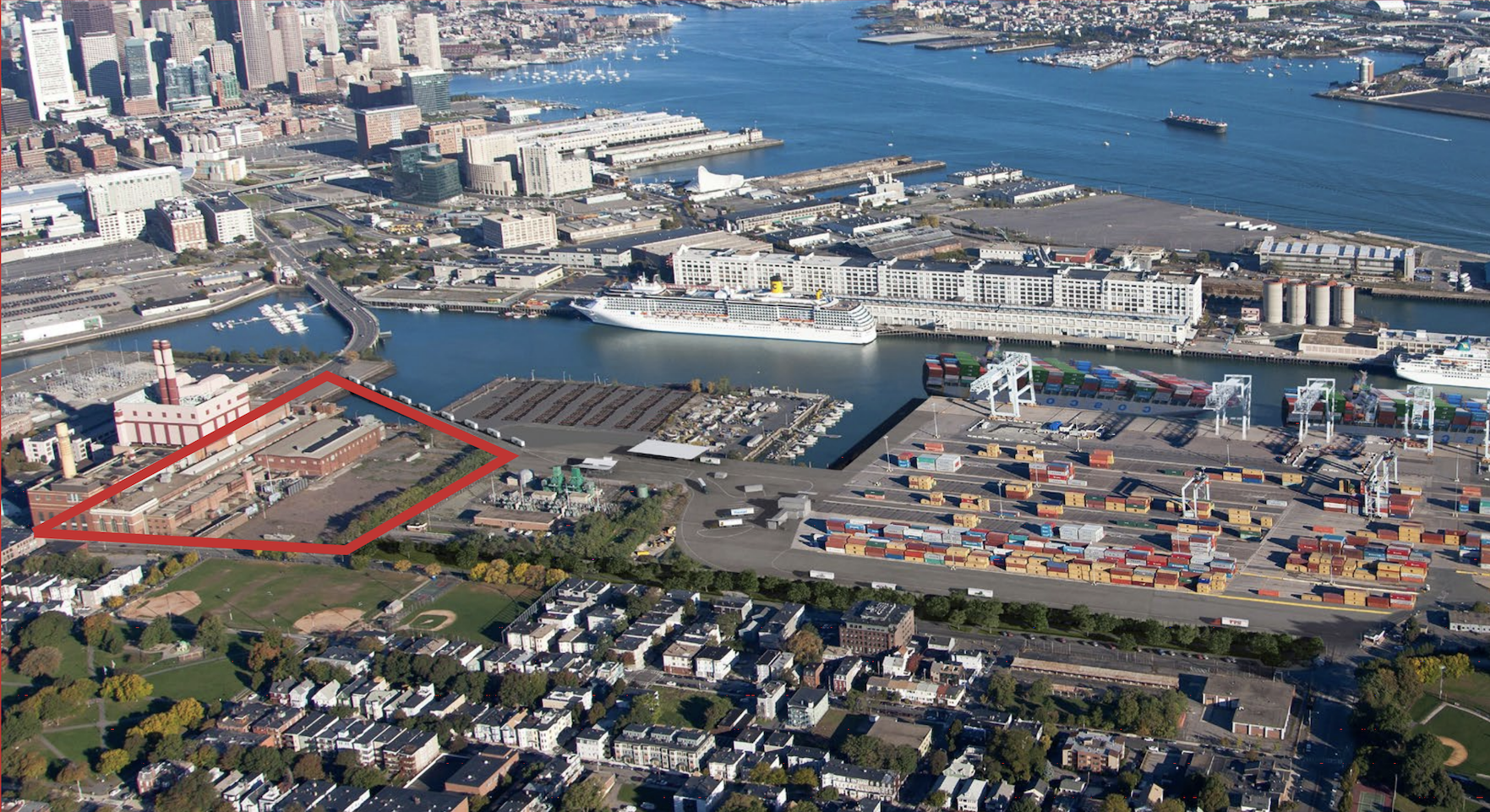
The proposed site of the South Boston development that currently includes a decommissioned power plant, with the site outlined in red and the Massport shipping terminal on the right. Source: Massport, BPDA
Developers Hilco and Redgate Capital Partners have been working with city officials on plans to redevelop the decommissioned Boston Edison power plant on the city’s southern end for about two years now. But what was once proposed as one of the largest residential development projects in recent memory for the city may now be built without any housing units at all, as of the latest filing with the Boston Planning and Development Agency (BPDA).
The reason for the new delay, according to the Boston Globe’s Tim Logan, concerns two competing priorities among elected officials and residents: the need for more housing and the concern that such development could stifle business growth in the future.
The specific concern in the case of the Boston Edison plant site involves its proximity to the Conley Terminal container port. One of the biggest and busiest shipping ports in New England, the Conley terminal has seen container traffic surge to record-highs in the last year according to Massport. Some City Council members worry that heavy truck traffic in and out of the nearby port could create problems if a large-scale residential development like what’s been proposed were built.
From a legal standpoint, more obstacles are apparent. The Massachusetts Port Authority (Massport) made an agreement in 2014 with Exelon, the power plant’s former owner, that no housing could be constructed on the site. Hilco and Redgate Capital claim Massport is open to lifting the restriction, but this would also need to win approval from lawmakers who remain skeptical.
As a compromise of sorts, the latest plans submitted by the developers to the city include two options for the site. One would include the aforementioned 750 housing units along with 430,000 square-feet of retail, office and research space. The other plan removes housing entirely and would entail approximately 1.5 million square feet of office and R&D-equipped space, in addition to a hotel and retail units.
In public meetings about the proposals, residents have made clear that additional housing is their top priority. The Globe’s Logan reported that the BPDA had received “hundreds” of letters from residents last year when plans for the site were first made public, many of them fearful that without additional housing in the area, rents and home prices would continue to rise beyond their means.
Developers also have substantial financial incentives to build housing in the area, although the value of office and research space is quickly catching up. Both Mayor Martin Walsh and Massport declined to take a firm stance in support of one use or another for the power plant site. According to one real estate analyst quoted in the Globe piece, the developers in this case may find the no-housing option growing more attractive by the day.
“It may be that the most important thing to them at this point is proceeding with the project,” the analyst said. “They have investors who put up money, and they’d like to be able to deliver a return. It may be the only enemy is time.”
